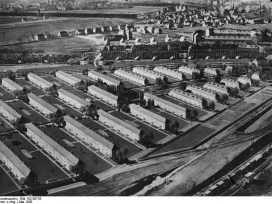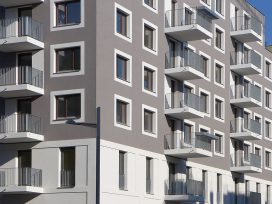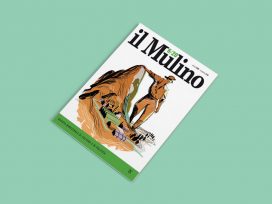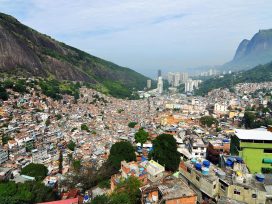A few days ago, a friend whom I love dearly and always find to have attractive ideas asked me, “What do you think is the most difficult cause in our artistic endeavours?” I was first caught unawares and answered, with a slackness of thought, “Never mind! All causes are difficult. If they weren’t, we wouldn’t have called them by the name of cause. The fact that we separate them from other problems is also self-explanatory.” My friend knows me a little. He realised that I was, as my students sometimes like to say, letting go of it. It was the truth.
He had come to me early in the morning and taken me to the Yildiz Park. We were walking underneath a sweet blue sky that refuted all we knew about the winter season. Barren trees resembling imaginary palisades rather than tarnished silver, vibrant green cypresses and pines booming forward like deep cello tunes amidst the silence, and the deep blue, sparkling sea that beckoned us to climates unknown had suddenly fascinated me. But my friend wouldn’t leave me alone. Maybe he had an inherent ability to take on two tasks at once with the same vigour.
I had to trace his mental footsteps, unwillingly. “Maybe you are right,” I said. “I was really reluctant at first. But I did not say things that were altogether wrong. Since you force me to, I will go even further and say that there is no other problem in life that is so complex and intricate. In the transition phase of today, everything has the look of a slightly threatening conundrum. We are at a strange period of our history. The gradual transformation of our civilisations over a century and a half produced a dilemma which took command of our lives and make everything doubly difficult. Our hearts and our minds, our goodwill and our habits all battle with one another. Mind you, the boundaries between them are not fixed, either. What is a matter of goodwill for me has to do with habits for another; what is an emotional situation in some is common sense for others. Perhaps future generations will think that this constant struggle is the distinguishing characteristic of the people who live today. For my generation, your generation, and the generations of those who will succeed us, they will perhaps say, ‘They lived in truly difficult times where every problem became complex and aggravated, where opinions doubled or even tripled,’ and will wonder and feel affection for us because of this.”
My intention was clear: I wanted to pelt my friend with a deluge of words to shake him out of his thought and fully enjoy this calm hour disrupted only by the scintillating light. I went on:
“Remember that life has never been free of problems and causes. Would you think that life had no problems at the times of Socrates or the Medicis, at the palaces of Andalusia or Baghdad, or the mansions in Edirnekapi where the intellectuals of the Yavuz Sultan Selim and Kanuni Süleyman (Suleyman the Magnificent and his father Selim the First – ed.) eras met? Did the people of those times consider issues of poetry, architecture, art, sculpture or music, all taken care of? Man is always a grab-bag of problems. What can life be other than answering the questions that we ask ourselves all the time? Even if we were not to ask them, they would come at us by themselves. But today, since circumstances are altogether different, things are more entangled and difficult.”
Why should one think of these on this beautiful morning? As an unexpected spring surrounded us from all sides, as the sea sparkled in gold and the sky was still drowsy, was there any reason to sweat and toil before a wall of problems?
My friend did not agree. He waved off a bee and persisted, “Back to the question, answer me! What is the most difficult cause in fine arts?” I had no choice but to leave the bee, the sun, the birds and the sea aside.
“Poetry,” I said, “poetry, of course.”
My friend shook his head.
“No,” he said, “Poetry is no longer a public problem. For the last sixty years, poems have been written for poets’ sake across the world. And of course for those people whose art and vocation we render even more incomprehensible by calling them critics. Once poets break loose from their goodwill or claws, they pass on directly to universities to become courses in literature or postgraduate dissertations. Both sides are content: one side for having found a few souls that understand them amidst a sea of misunderstandings, and the other side for thinking they resemble those scholars of cosmography that they aspire to. Almost each one of them every day discovers another who had been sitting and living right next to him, like a new star.”
“Architecture, then?”
“That is at another dead end. It has not been able to pose a problem for us for a long time. We have lost the concept of city. Destitution has set up its order in us. Did you know that being poor is not a great problem by itself? But when the order of destitution takes root someplace and begins to rule life, that is the end. We have lost the concept of city long ago. We are subject to this order. Or we flee from it. And because of this, we keep wasting this beautiful city. How could you talk of architecture under these circumstances? Just look at our life in Istanbul! Our monuments are in some foreign place, and we are in some other foreign place. Half the city is deserted. The other half has succumbed to slums and workshops. Those who have the opportunity either find a grove to uproot every other day, or erect whole new neighbourhoods as if setting up tents. It’s Levent today (at the time a vacant part of the metropolitan area which had just started filling up with apartment buildings and slums; now totally occupied by skyscrapers and shopping malls – ed.) and God knows where else tomorrow.”
I could have talked about art and sculpture, but I was afraid to waste Nuri Iyem and Zühtü Müridoglu; many of those whose works I loved, minds that I believed in, would be victims. I did not feel like defending any idea or person. It was best to let him speak.
“Well then,” I said, “would you be kind enough to answer your own question?”
He did not respond to me. He continued thinking aloud from where he had left.
“Have you noticed the shops, tenants of the foundation, underneath the Süleymaniye Mosque? Have you seen the ragged state those crown jewels are in? We have no more any idea of what a city is. We have abandoned it to derelict trucks, unsightly pickpockets, roaming or loitering taxi drivers that resemble predators looking for prey, car parks full of vehicles of all types and ages, rusted stovepipes, and nerve-racking shrieks of street vendors. Have you ever seen, in another country, eight or ten cars manoeuvering in different directions on a wide road while attendants of vehicles holler for passengers like circus criers?
“Have you ever heard eight street vendors hawking ‘modern slippers’, and fifteen screaming greengrocers, all joining the chorus within five minutes in a seven-meter long street? Where did that old Istanbul go? It was dilapidated, destitute and desperate. Yet, it had a life and style of its own. Every trade was organized in a guild. Every vendor would advertise his wares in a specific style. The city is a common way of life that forms around a specific discipline and style. Architecture sets the grand style of this life. It may not be the conductor of the orchestra anymore, as it was in the past, but it still makes its presence felt. As one walks towards it, life gains a colour unique to that land.
“I am not talking about cities of architecture like Bruges, Ghent or Venice. They preserve an entire spirituality like a dream of the Middle Ages amidst modern life and the mechanized civilisation it has succumbed to. Istanbul partly resembles those cities with its multitude of religious monuments. But it is too wide and large to be just like them. Bursa is more conducive to this function. Yet its flatland is being slowly nibbled by an inexplicable urbanisation, similar to a silkworm eating up the edges of a mulberry leaf. Soon, we will remember the Bursa plain as a sad fairytale, much like our forests. Yet, it could have preserved an architectural heritage. All young architects are desperately trying to address this concern. But, like I said, that horrendous order established within us by destitution prevents this. We must also confess that there is something else; something that is beyond us. The world is seeking a new architectural style. New materials and new living conditions have caused distress of varying magnitude in almost all countries. I can’t remember which author it was that claimed Europe was passing through another Alexandrian era, where all sorts of styles, aesthetic theories, beliefs and philosophies are mingled, thus allowing an unfettered and extreme individualism to dominate life. It’s the story of the rich baker who built a crypt resembling a bakery in ancient Rome. Now we have entered that old period with our own circumstances. I mean more sharply and desperately. Other countries more or less know how to protect themselves from such epidemics. Their lives are subject to some sort of regulation that comes in different ways. Do you think a building like the new Municipal Building could be built across a monument like the Sehzadebasi Mosque in any other city but Istanbul? Do you think a place like the Sultanahmet Square, where the hearts of four different civilisations beat together and even the cobblestones speak four languages, would remain in its current state? In Sehzadebasi, there is the magnificent monument of Sinan (the renown Ottoman architect, 1489-1588 – ed.) and the breathtaking view of the (Byzantian) Bozdogan Arc, and then there is this Municipality Building with its weird dome. As if this wasn’t enough, the restoration of the Burmali Mescid (A small mosque in the historical city with a minaret in spiral form – ed.) that has no significance apart from its minaret. Let’s say that the old people could not resist the goodwill of some philanthropists. One of the most beautiful cathedrals of the world, the Cathedral of Seville, is so inundated by the fervour of believers who seek blessings from the living that it is impossible to see that stunning architecture where the genius of Andalusia is locked in close embrace with the pride of Spain. Fortunately, worshipping in Islam is practiced in ranks, so it is possible to get a full view of the interior of our mosques and protect them from the assault of the rich. We have not taken up that (Christian) custom.
“Aren’t you in favour of restoration?” I asked. “Every nation does it. Almost all French and German cathedrals have been reconstructed. Some have been reconstructed twice after the two world wars.”
My friend swatted another bee that was as interested in art and urban development as we were, and answered:
“Of course I am. But only for those who deserve it. Take the Sultan Hani (Sultan’s Inn – ed.) for example, a unique edifice. There are many masterpieces in Anatolia that deserve all kinds of effort for preservation. Great works should of course be restored. And we should strive to not lose them. But a second-degree, collapsed building like the Burmali Mescid may be sacrificed to the beauty of the Sehzade Mosque. I was born and raised in Sehzadebasi. I am attached to every single cobblestone in the neighbourhood. But I cannot demand it to be the way it was before. The interesting part is that minaret. We could have planted grass around it and the question would be solved. Let’s leave the Burmali Mescid aside, but how about the Hoskadem Kalfa Mosque right across that unsightly mosque?
“Look, my friend, Valery wrote a sentence that may be a motto for all life. This great poet asks a young colleague in one of his diaries where he used to write down his thoughts every morning, ‘Above all, tell me, what is your resistance for? What are you struggling against?’ I believe that this resistance has as much significance in life as progress, which bears all the creative secrets of life, as it is with resistance that we find the opportunity to become truly victorious. Resistance prioritises and selects. We have lost the idea of resistance. Resistance is not turning your back to the new. Like we did at the Sisli Mosque. Resistance is always being on the lookout, like vanguards keeping watch on the frontlines. We do not have resistance. I condemned destitution a while ago. We have no resistance against wealth either. We cannot resist anything, new or old.”
We were both aghast at the sad picture my friend had depicted. Suddenly, he started again:
“Have you ever thought that we are not the owners of the city, but merely living in it? Like guests of the government or municipality. This has been so since the beginning. If it were otherwise, would a city that has a population of two million, and where one-eighth of the total wealth and labour force of Turkey is concentrated, wait calmly, peacefully for fifteen years so that an opera hall could be built? We do not contribute to city life constructively.”
My friend seemed to have forgotten his question.
“But you were going to talk about our most difficult cause. You had even eliminated architecture as a possibility. Now you have completely forgotten it.”
“No,” he said, “I haven’t forgotten. I was going to talk about the cause of music. I got carried away. But it wasn’t so bad. I found a basis for my thoughts. I think our most important cause is that of music.”
Dear listeners, unfortunately my time is up. Both my friend and I had nothing to do that day. It is impossible for me to relate what we talked about among the birds, the grass, and dry leaves and the last flowers of the season in the fifteen minutes allocated to me here. We can continue this talk next month. I greet you with my best regards.
Ahmet Hamdi Tanpinar prepared this speech for the Istanbul Radio, but was unable to deliver it due to his sudden death. We have obtained this last writing of the master from Baki Süha Ediboglu.






